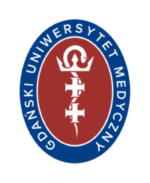New Member Feature: Adam Mickiewicz University, Poland
The Adam Mickiewicz University in Poznan, Poland, recently became a institutional member of ScanBalt.
The University.
Poznań is a leading academic centre in Poland. With respect to life sciences and biotechnology, Poznań might be considered as “a green centre” (or “green valley”) of Poland with a lot of research concentrated in plant sciences
The Adam Mickiewicz University (AMU) was conferred in 1955 and is the third largest university in Poland. It is a place of employment of almost 4 800 people, among them 2 600 teachers (including 357 professors and 406 doctors with habilitation). AMU has over 51 000 students and 1400 PhD students. Thirteen Faculties and several smaller Institutes offer about 190 degrees and other courses. A three-step model of education, comprising the bachelor’s degree, master’s degree and doctor’s degree, is becoming more and more popular at AMU. Individual interdisciplinary studies in science and the humanities have also been introduced.
Many directions of study proposed by AMU have got the accreditation from University Accreditation Commission being a member of the Network of Central and Eastern European Quality Assurance Agencies in Higher Education (directions offered by Faculty of Biology), and also from the State Accreditation Committee. Increasing number of AMU students spend one or two semesters at foreign universities or foreign research centers. The European Credit Transfer System (ECTS), developed under the Erasmus programme, improved the procedure leading to full recognition of the period of study abroad and should also facilitate and promote student exchange between Poland and other countries.
Further information on the University could be found on webpages:
www.amu.edu.pl/index.php (original Polish version)
www.guide.amu.edu.pl/amu/index.htm (English version)
The Faculty of Biology.
The Faculty of Biology is organized into 4 Institutes and several specialized all-faculty units. These Institutes are: Institute of Antropology, Institute of Experimental Biology, Institute of Environmental Biology, and Institute of Molecular Biology and Biotechnology (IMBB). For decades the laboratories and research groups of the Faculty were spread over Poznań. In 2003 the Faculty started to move into their new premises in Collegium Biologicum built at the new Morasko campus. It is hoped that by 2006 all personnel and the facilities of the Faculty will be moved there. More than 300 people are employed within the Faculty, including 183 academic teachers, among them 27 professors and 30 doctors with habilitation. At present there are more than 1 500 students studying for bachelor and master degrees and 118 PhD students. Students of the Faculty have a possibility to study: Biology (with specializations in Environmental Biology, Experimental Biology, Human Biology, and Molecular Biology), Biotechnology, Environment Protection, Bioinformatics, Ecology and Management of Natural Resources, Hydrobiology.
More information on The Faculty of Biology could be found at:
http://www.staff.amu.edu.pl/~biologia/ (original Polish version)
www.guide.amu.edu.pl/biology/index.htm (English version)
Institute of Molecular Biology and Biotechnology.
Institute of Molecular Biology and Biotechnology (IMBB) is organised into five departments of: Biochemistry, Bioenergetics, Biotechnology, Gene Expression, and Plant Molecular Biology. It comprises 80 staff members including: 4 full professors, 6 AMU associate professors, 17 assistant professors, 32 PhD students, and 21 technical and administrative staff.
Two fundamental goals of the IMBB are research and education in the fields of biochemistry, molecular biology, and biotechnology.
The main research activities of the IMBB
1. Characteristic features and expression patterns of organellar genes and the use of these sequences in studying genetic differentiation mainly in lupin, cauliflower, rape, potato, tomato and liverworts.
2. RNA functioning in plants, in particular: maturation of eukaryotic RNA; RNA transport from the nucleus to the cytoplasm; RNA editing and post-transcriptional gene silencing; RNA-modifying enzymes; cap binding proteins in plants.
3. Signal transduction in plants – role of extracellular signalling molecules in plants, among them nitric oxide.
4. Plant tolerance to environmental pollution – molecular and biochemical mechanisms of plant responses to abiotic stresses, including toxic metals, e.g. Pb, Al, and salinity, leading to oxidative stress.
5. Plant tolerance to viruses – molecular mechanisms of induction of tolerance evoked by transgenes introduced into plants.
6. Plant cell wall biology – cell wall glycoproteins and low molecular weight compounds and their role in plant development and defence responses; cell wall – cytoskeleton interactions.
7. Characterisation of Bryophyta with the use of molecular biology techniques to determine the phylogenetic linkages of lower plants and organellar transmission during fertilization
8. Genetic transformation of plants aimed to increase their tolerance to some pathogens and pests and to improve their use properties.
9. Molecular basis of energy transformation, metabolite and protein transport into mitochondria of heterotrophic single-cell organisms, with axenically cultivated amoebae, slime-mould yeast and plants in particular.
The Institute is also a co-founder of Wielkopolska Centre for Medical Biotechnology which acts a one of the regional Centres for Advanced Technologies.
News Source: Prof. Przemyslaw Wojtaszek, Department of Biochemistry, Adam Mickiewicz University, Poznan, Poland.











